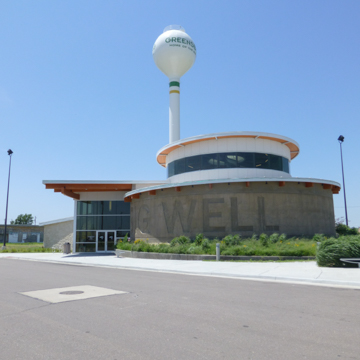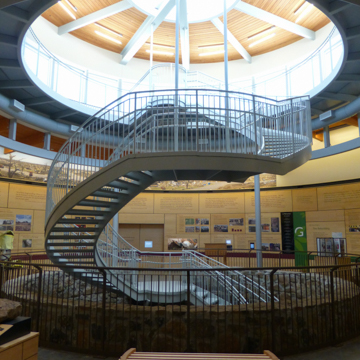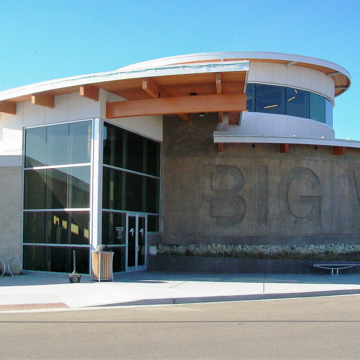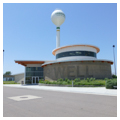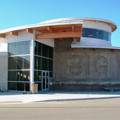You are here
Big Well
The Greensburg Well illustrates the kind of effort necessary for settlers in western Kansas to acquire water, including the collaboration between railroads and communities, and the energy needed to make the land hospitable to human habitation. As the use of the well changed over time, and later, as the town recovered from a devastating tornado, the well came to symbolize the resilience of the people of Greensburg.
The town of Greensburg was founded in 1884 as part of the rush to settle western Kansas. Three years later, tracks for the Santa Fe Railroad reached the town. With the coming of the railroad, substantial amounts of water were needed for the steam locomotives, and the only reliable source of water in the area was an underground aquifer. Together, the town and the railroad established the Greensburg Water Supply and Hydraulic Company, with the express purpose of digging a well to provide water for the town and the railroad. Engineers from the Santa Fe Railroad supervised a dozen or so day laborers from the surrounding farms in digging a 32-foot-diameter hole. As they dug, they shored the deepening hole with wood bracing. Pulleys lowered the men into the well, and removed the loosened dirt. In 1888, after a year of digging, they reached the aquifer at depth of 109 feet below grade. From the bottom of the hole they drilled 40-foot lengths of perforated pipe into the surrounding soil to collect water, and built a 2-foot wide rock wall around the interior of the hole to replace the wooden shoring. Finally, they built a stair that spiraled down around the perimeter of the hole, and anchored it into the rock wall.
Greensburg grew quickly. By 1886 the town had 2,600 residents, but the population boom was short lived, and by 1890 the town’s population had fallen to just over 500 people. In 1895 the Santa Fe Railroad discontinued its service to Greensburg. The town continued to draw its water from the well until 1932, when an alternate supply became available. In 1939 the well, which was advertised as the world’s largest hand-dug well, was opened for tours and became a very successful tourist attraction.
The small museum that was built adjacent to the well was destroyed by a tornado in 2007, and the well was closed to visitors. In 2012 a new and larger museum and visitor’s center opened. Announcing its presence, “Big Well” is engraved in large-scale lettering on facade of the spiral-shaped structure. Designed by the Wichita architectural firm Law Kingdon, the building is located over the top of the old well and is skillfully integrated into the existing infrastructure. The building includes a new stair, which circles down the sides of the well. The stair continues up to an observatory above the museum that provides a 360-degree panorama of the surrounding town. Exhibits interpreting the well and the town’s history were laid out by the celebrated designer Ralph Appelbaum.
NOTE: This entry was originally published in David Sachs and George Ehrlich, Guide to Kansas Architecture (Lawrence: University Press of Kansas, 1996). © 1996 by the University Press of Kansas.
References
Pankrantz, Richard. “Greensburg Well,” Kiowa County, Kansas. National Register of Historic Places Inventory-Nomination Form, 1972. National Park Service, U.S. Department of the Interior, Washington, D.C.
Writing Credits
If SAH Archipedia has been useful to you, please consider supporting it.
SAH Archipedia tells the story of the United States through its buildings, landscapes, and cities. This freely available resource empowers the public with authoritative knowledge that deepens their understanding and appreciation of the built environment. But the Society of Architectural Historians, which created SAH Archipedia with University of Virginia Press, needs your support to maintain the high-caliber research, writing, photography, cartography, editing, design, and programming that make SAH Archipedia a trusted online resource available to all who value the history of place, heritage tourism, and learning.










